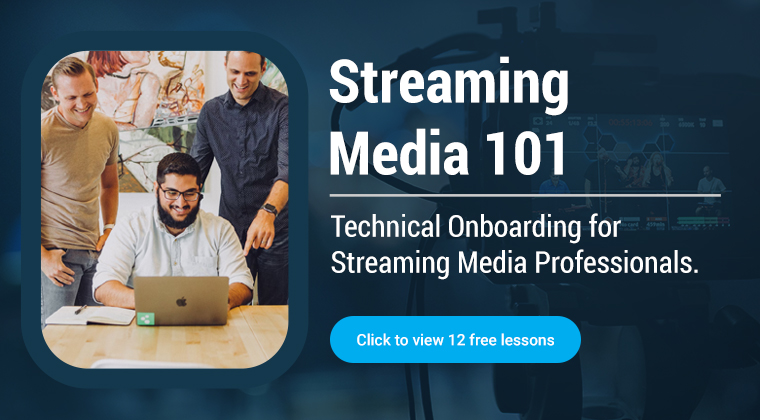Executive Summary H.264 is the most widely used codec on the planet, with significant penetration in optical disc, broadcast, and streaming video markets. However, many uses of H.264 are subject to royalties, something that should be considered prior to its adaption. Other factors to consider include comparative quality against other available technologies, like Google’s WebM, as well as the general …
Read More »Interview on WebM and HTML5 at StreamingMedia West
ScribeMedia.org produced a number of video interviews at StreamingMedia West, including an interview with StreamingLearning Center’s founding visionary, Jan Ozer (sorry, couldn’t resist, writing in the third party is so freeing). As the title suggests, host Peter Cervieri and I discuss WebM, HTML5 and several other issues. Interestingly, the interview was shot with a single HD camera, and the ScribeMedia …
Read More »Encoding H.264 Video for Streaming and Progressive Download – Presentation
Here’s the description of the presentation that I just gave at StreamingMedia West. You can download the PDF below. Enjoy! This seminar focuses on producing H.264 video for streaming or progressive download. It starts with a deep look at key H.264 encoding parameters like B-frames, profiles, and levels and how to customize encoding parameters for distributing via QuickTime and Flash. …
Read More »H.264 Presentations from Streaming Media Europe
I gave two presentations at Streaming Media Europe last week, one a three hour presentation on producing H.264 for Flash, Silverlight, QuickTime and HTML5, the other a 30 minute short course on producing H.264. Both presentations are attached hereto. Here’s the agenda from the longer presentation. Most notable are new performance stats that I collected for H.264 playback on files …
Read More »Producing H.264 with Episode 6 and Squeeze 6.5
Article just posted at Digital Content Producer. I got an early look at Telestream’s completely new Episode 6, with a hot new interface, and improved H.264 quality and performance. I also looked at Squeeze 6.5, which didn’t really update any H.264-related features. The bottom line …
Read More »x264Encoder vs the Apple Codec
If you’re looking for the highest quality H.264 output, and encode on the Apple platform, you should try the x264Encoder encoder, which you can download here. This article contains comparison images that accompany my comparison review for Digital Content Producer (link to come). This review debuts a new streaming test video comprised of clips from stock footage company Artbeats and …
Read More »Producing H.264 Video
H.264 is the most widely used codec today, whether for streaming via Flash or Silverlight or for the Apple iPod, iPhone, and iPad product lines. If you’ve worked with H.264 before, the format is old hat for you. But if you’re cutting over from VP6 or Windows Media or expanding distribution to H.264-compatible devices, you’re faced with a learning curve. …
Read More »MPEG-LA Announces No royalties on Free Internet Videos – Ever
This is a story I’ve been following for awhile. By way of background, MPEG-LA represents the H.264 patent holders and is charged with administering all licenses and collecting all royalties, which are paid by companies who build H.264 encoders, players and, in some instances, content. In the past, MPEG-LA hasn’t charged royalties for content delivered free over the internet, though …
Read More »WebM vs. H.264: A First Look
This article compares H.264 to WebM, Google’s implementation of the VP8 codec, using three variables (encoding time, compressed quality, and CPU requirements) for playback on three personal computers. Here’s the CliffsNotes version of the results: Using Sorenson Squeeze to produce both H.264 and WebM, the latter definitely took longer, but there are techniques that you can use to reduce the …
Read More »H.264 Encoding Parameters of the Rich and Famous
Whenever I speak in public about streaming production, I try to back up my recommendations with file parameters gathered from prominent media and corporate sites. Here are some file statistics gathered for a series of sessions that I taught this spring and summer. Information from the first slide was gathered from about 50 corporate and media sites, which I divided …
Read More » Streaming Learning Center Where Streaming Professionals Learn to Excel
Streaming Learning Center Where Streaming Professionals Learn to Excel


